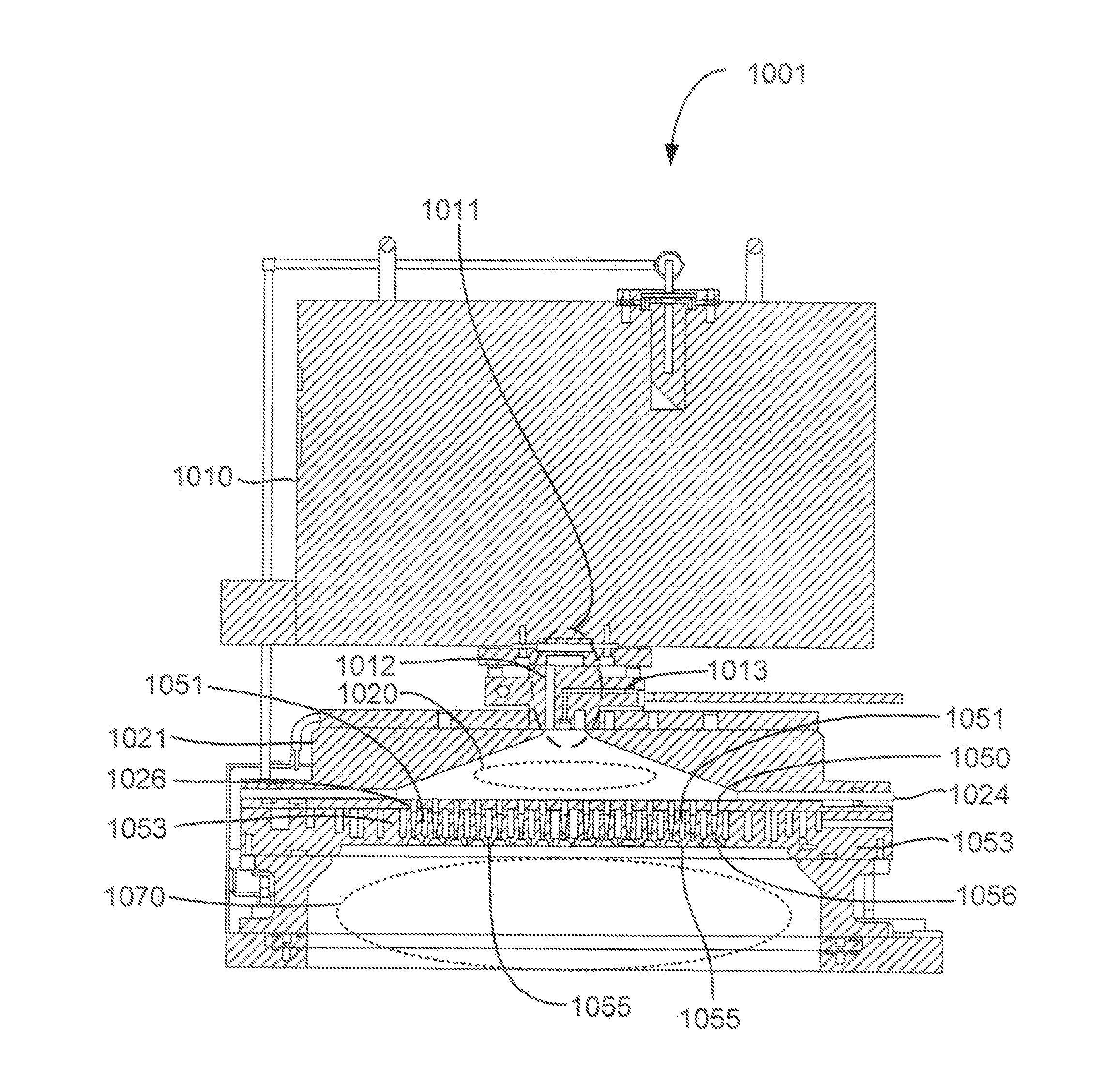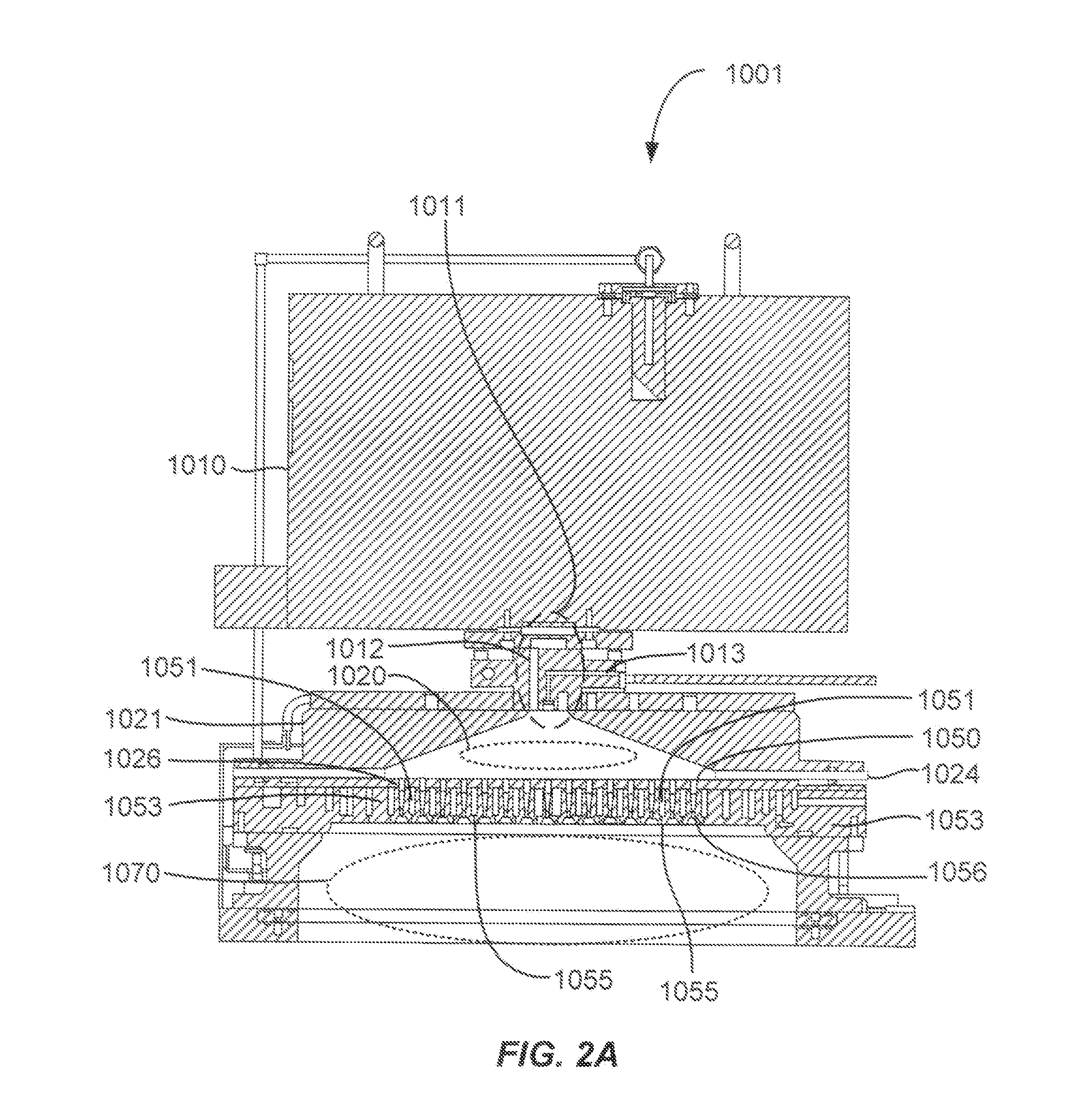Dry-etch selectivity
a selective etching and selectivity technology, applied in the direction of electrical equipment, basic electric elements, electric discharge tubes, etc., can solve the problems of limited selectivity of silicon nitride in these etching processes, and few options for selective etching silicon nitride faster, so as to reduce the number of ionically charged species
- Summary
- Abstract
- Description
- Claims
- Application Information
AI Technical Summary
Benefits of technology
Problems solved by technology
Method used
Image
Examples
Embodiment Construction
[0014]A method of etching exposed patterned heterogeneous structures is described and includes a remote plasma etch formed from a reactive precursor. The plasma power is pulsed rather than left on continuously. Plasma effluents from the remote plasma are flowed into a substrate processing region where the plasma effluents selectively remove one material faster than another. The etch selectivity results from the pulsing of the plasma power to the remote plasma region, which has been found to suppress the number of ionically-charged species that reach the substrate. The etch selectivity may also result from the presence of an ion suppression element positioned between a portion of the remote plasma and the substrate processing region.
[0015]The plasma power applied to the remote plasma region is pulsed to provide greater control of ionic concentration in the substrate processing region. Pulsing the plasma power may be performed along with or even without an ion suppressor element in em...
PUM
 Login to View More
Login to View More Abstract
Description
Claims
Application Information
 Login to View More
Login to View More - R&D
- Intellectual Property
- Life Sciences
- Materials
- Tech Scout
- Unparalleled Data Quality
- Higher Quality Content
- 60% Fewer Hallucinations
Browse by: Latest US Patents, China's latest patents, Technical Efficacy Thesaurus, Application Domain, Technology Topic, Popular Technical Reports.
© 2025 PatSnap. All rights reserved.Legal|Privacy policy|Modern Slavery Act Transparency Statement|Sitemap|About US| Contact US: help@patsnap.com



